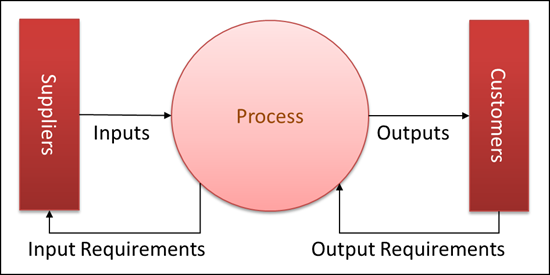SIPOC Method

Defining a process using the SIPOC tool starts with declaring the work boundaries, i.e. where does the process start and where does it end. Declaring the boundaries shortens conversations regarding the process because everyone knows and is aligned to the box that defines the work. The next step is to define the parts of the process. Many experts suggest starting with the customer and working backwards, i.e. define the customer, declare what is delivered to the customer, what steps are taken to deliver the output, what is needed to perform the steps, and who provides what is needed.
The parts of the process are:
- Supplier: the person, group or process that provides an input
- Input: the product(s) or service(s) necessary to execute the process
- Process: the actions necessary to transform inputs into outputs (usually 3 to 7 major steps)
- Output: the product(s) or service(s) delivered by the process
- Customer: the person, group or process that receives the output
In defining the steps of the process, use the 3 to 7 rule, as described earlier. Processes can be described in hierarchies versus details. Hierarchies are much easier to understand and to explain then 35 step flowcharts.
- Login or register to post comments
-

- Thumbnail
 Printer-friendly version
Printer-friendly version- Send by email
- PDF version
Recent Updates
Microsoft Outlook Add-In

Focus on Your Life, Not Your Inbox
Achieve greater focus by shifting your attention from e-mail to accomplishing what matters most!
Company News
Stay up to date with our newsletter!


